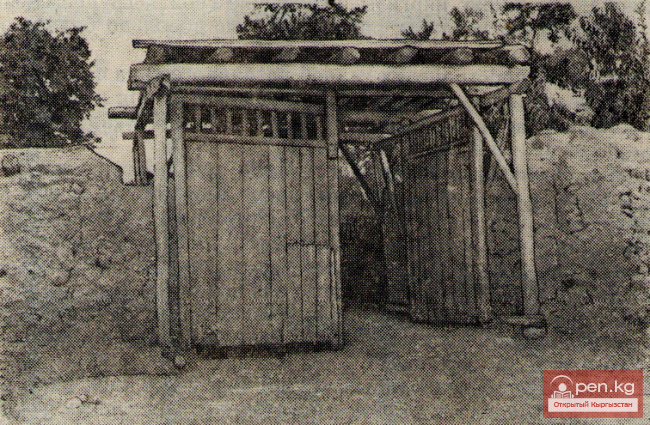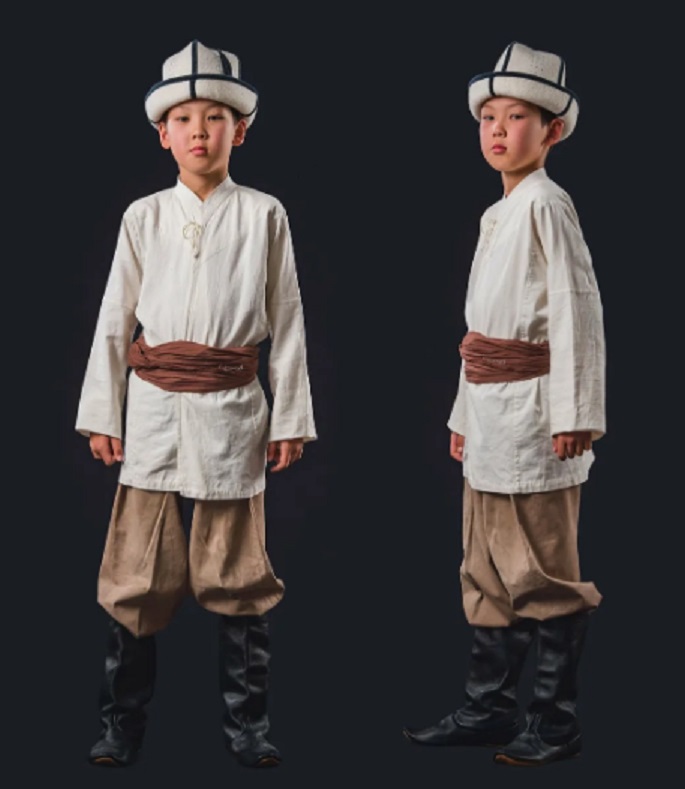
Stove-fireplace
The stove-fireplace with a wide chimney that narrows towards the top has become widely used in Southern Kyrgyzstan. Therefore, the Kyrgyz call this stove moru (chimney). It is never closed. Its mass appearance, evidently, dates back to the late 19th century, as many houses of that time still used a home hearth and made smoke holes in the roofs. This is mentioned in some literary sources, and the same is recounted by the elders. The main purpose of the stove is the same as that of the hearth — to cook food. A pot is placed on a clay semi-oval about 30-35 cm high, arranged at the base of the stove. The fireplace is usually placed in the middle of the wall, which serves as the back side of the stove. The front and side parts protrude slightly forward.
At the same time, the fireplace itself has some architectural design. In its construction, this stove-fireplace is similar to the stoves-fireplaces found in Uzbek and Tajik houses.
Since the stove-fireplace is not significantly important for heating the room, Kyrgyz people resort to some other heating methods in winter. Previously, sandalwood was used for this purpose, which was widely spread among Uzbeks and Tajiks. However, among the Kyrgyz, "sandal" did not last long and was not used everywhere in the southern region. After the revolution, iron and cast-iron stoves began to be acquired, which were placed in the middle of the room for the winter. Now these stoves are rarely used. Houses have started to install stoves made of raw, and less often burnt, bricks, sometimes with heaters leading into an adjacent room.
Southern Kyrgyz houses in the late 19th - early 20th centuries












































